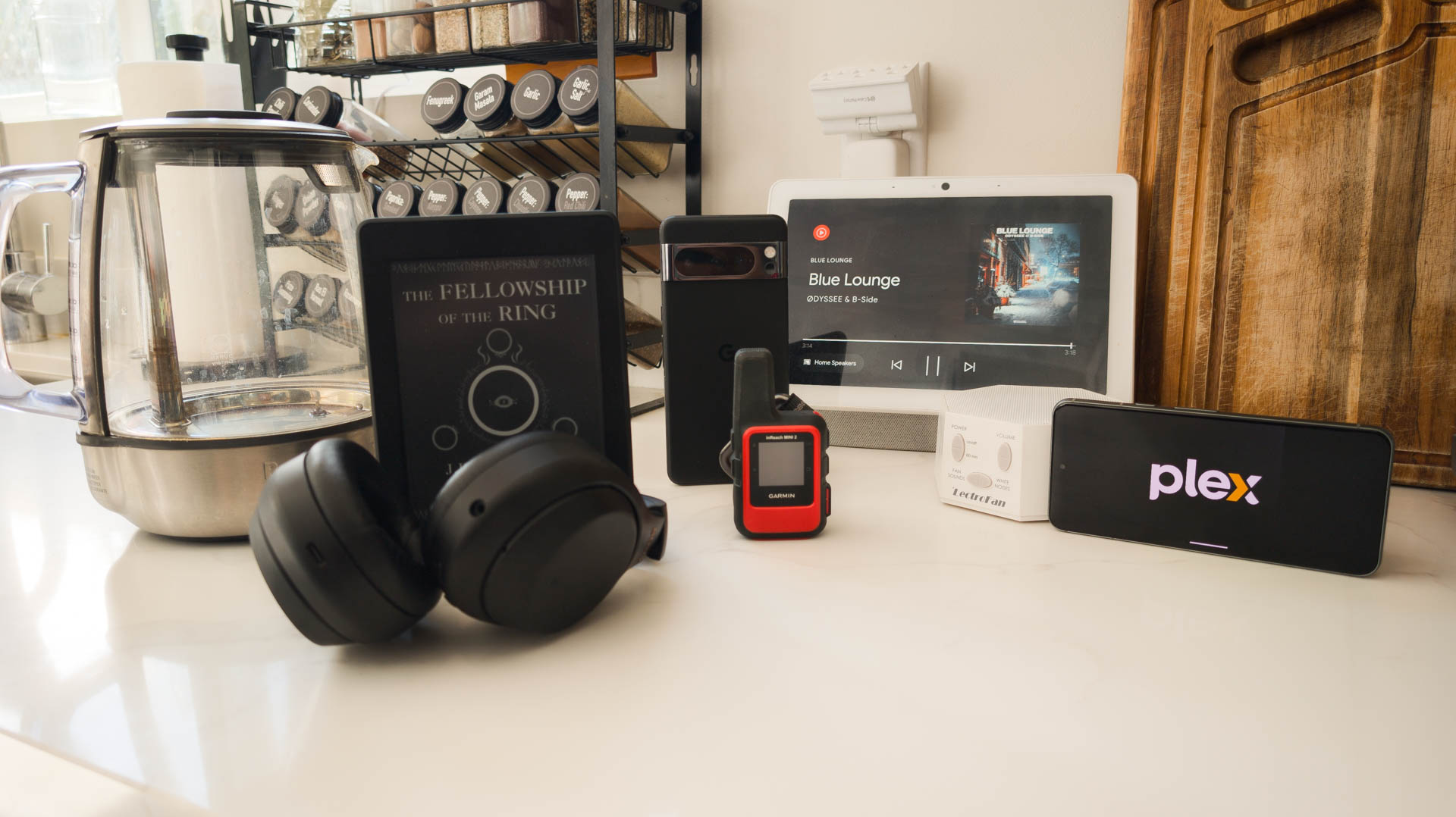
C. Scott Brown / Android Authority
Every week that I’ve worked at Android Authority, I’ve interacted with at least one new tech product. It might have been an Android smartphone, a fitness tracker, a smartwatch, a tablet, an app, or even something way off the beaten path, like stackable light-up cubes. Some of these tech products have been good, and some have been bad. A select few have been great. But an even more select few — the absolute cream of the crop — were life-changing.
It doesn’t happen often, but every once in a while, a product comes along that completely changes how I live my life. Products in this category have become so integral to my day-to-day existence that I can’t imagine what my life would be like without them. In this article, I’m going to talk about eight of them.
Just to get this out of the way, I gave myself a rule for this list: don’t go too broad. For example, one could make a sound argument that “smartphone” should be the first thing here, considering how much the very idea of a smartphone has changed not just my life but everyone’s lives, collectively. However, where does that stop? Should I also have the wheel, a screw, and a hammer here? Those seem like silly things to write about, so I won’t be talking about fundamental technologies, transistors, microprocessors, or anything like that.
Also, I do want to point out that “life-changing” is highly subjective. There are probably products here that you’ve used and gotten rid of because they didn’t offer you enough value. There could also be something on this list that you would feel no need even to try because your life has no place for it. Just because they’ve helped me in some way doesn’t mean they are objectively great for everyone. But who knows: maybe there’s something here you’ll give a first (or second) try to once you see how much it’s made my life better!
With all that said, let’s jump into it!
Pixel camera
Ryan Haines / Android Authority
No matter how hard I try, I still don’t understand photography. I understand the basics, obviously — it’s a significant part of my job — but I still don’t get it. I can’t look at a real-life situation and determine the best way to photograph it. I don’t understand sightlines, I can’t talk with photographers about gear, and I wouldn’t even know how to develop a roll of film if I had a gun to my head.
I understand the Pixel camera, though. Using my Pixel 9 Pro ($999 at Amazon), I can take a photo of something and know that it will come out OK. Sometimes, it might even be great, depending on how much time I have and how important the photo is. But it is very, very rare for me to take a bad photo with the Pixel camera, which in itself has been life-changing.
I trust the Pixel camera with my work but, more importantly, I trust it with capturing my most treasured memories.
Yes, the best Samsung phones also take great photos — provided the subject doesn’t move. Even iPhones take decent photos (but let’s be real, iPhones own video, not photography). But after using who knows how many phones over the years, the Pixel camera is the only one that I know I can rely on every single time. In a word, I trust it. Considering our own readers frequently herald Pixels as the best camera phones you can get, most people reading this likely agree.
This not only helps me with my work but also with preserving precious memories. I have some truly amazing photos of my cat Luther, who unfortunately passed away earlier this year. Those photos will be treasured forever, and 90% of them were shot on a Pixel. I have photos of my partner and me on vacation in South America, shots of my dad and me hiking up a mountain, snaps of terrific friends of mine getting married — the list goes on. Yes, I would still have been able to capture those photos if I didn’t have the Pixel camera, but they might not look as good, and most crucially, I wouldn’t have felt so at ease and confident about capturing them.
Google Nest Hub Max
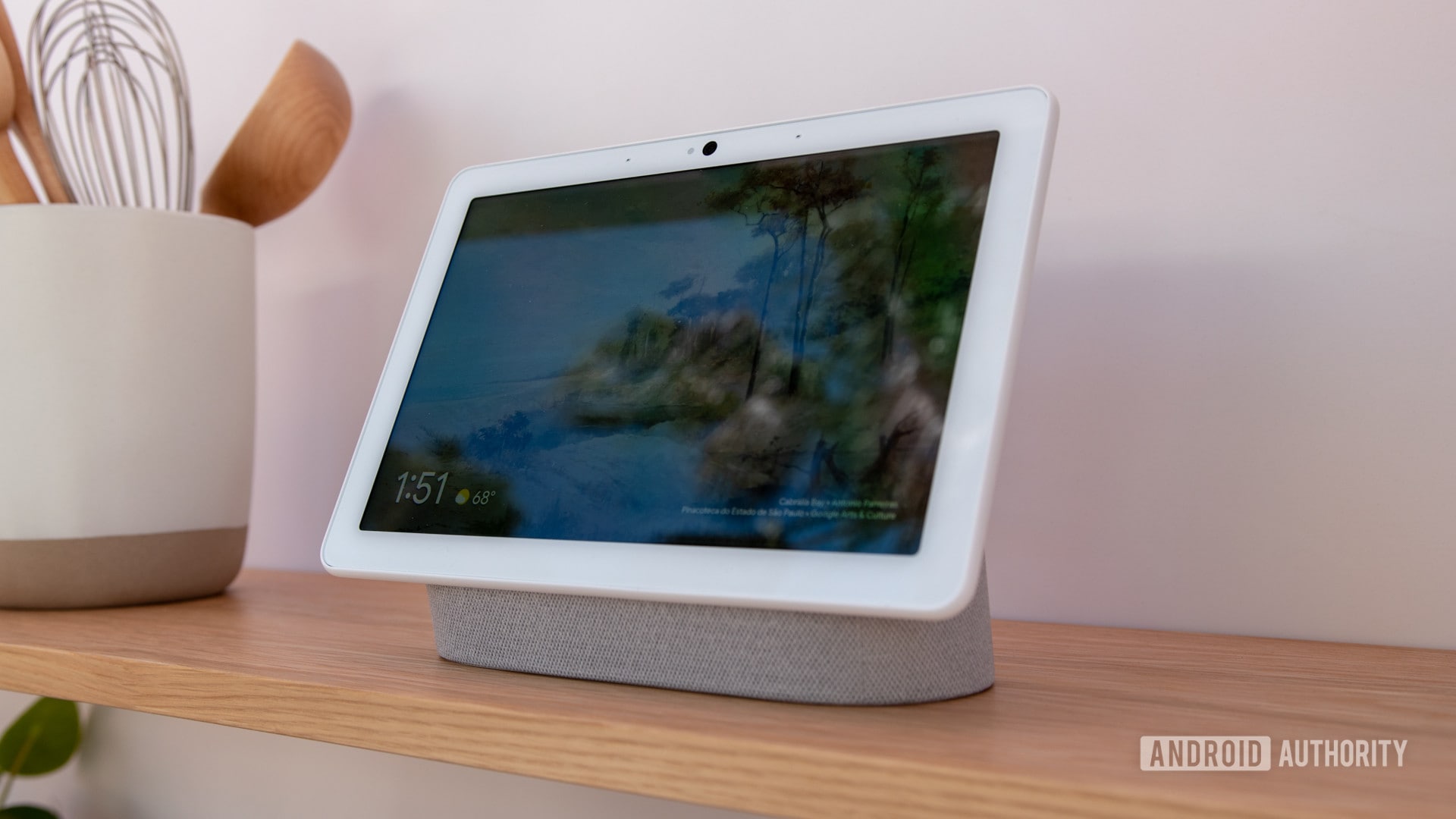
Despite the success of things like the Pixel camera — which is mostly a software product — Google has had a hit-and-miss history with hardware. Although the company’s heart has always been in the right place, that hasn’t stopped it from releasing some true head-scratchers, like Google Clips, the Nexus Q (which didn’t even make it out the door), Google Glass, and more. On the opposite end of the spectrum, though, we have the Google Nest Hub Max ($229.99 at Best Buy), which I would argue is the best hardware product Google has ever made.
It’s a dead simple device: an always-on screen that primarily acts as a gateway to Google Assistant. On paper, it would seem horribly limited in scope: there are no apps to install, you can’t take it anywhere, and it doesn’t have a powerful processor. But because Google kept it so basic and focused only on what people would use it for, it has become an indispensable part of my life.
Based on the level of interaction I have with it, the Google Nest Hub Max is as integral to my life as my smartphone and laptop.
My Nest Hub Max lives in my kitchen, which is where I’m sure a lot of folks keep it. When not actively doing something, it acts as a constantly updated digital photo frame, showing off the aforementioned memories captured by my Pixel. This makes me emotionally attached to the device because it’s always a joy to see it, especially when it says “good morning” to me when I wake up. It isn’t just nice to look at, though: I ask it questions all the time, such as what the weather is, how many tablespoons are in half a cup, how long it will take me to drive to San Jose, etc. I also ask it to perform various functions, such as setting a timer, turning off the lights, or showing me who just rang the doorbell. There are some days that I talk to the Nest Hub Max more than I talk to any human, which sounds a bit sad but illustrates how much of a part of my life it’s become!
Daily, the only two tech products I interact with more than the Nest Hub Max are my phone and my laptop. The kicker, though, is that I’ve replaced my phone and laptop at least half a dozen times since I bought the Google Nest Hub Max. It has never failed me, and nothing better (or even equal) has launched since it first debuted in 2019. Even the technologically superior Pixel Tablet — which Google clearly intended to one-up the Nest Hub Max — couldn’t top its reliability and ease of use. At this point, I don’t know if there will ever be a time that the Nest Hub Max isn’t in my house.
Plex
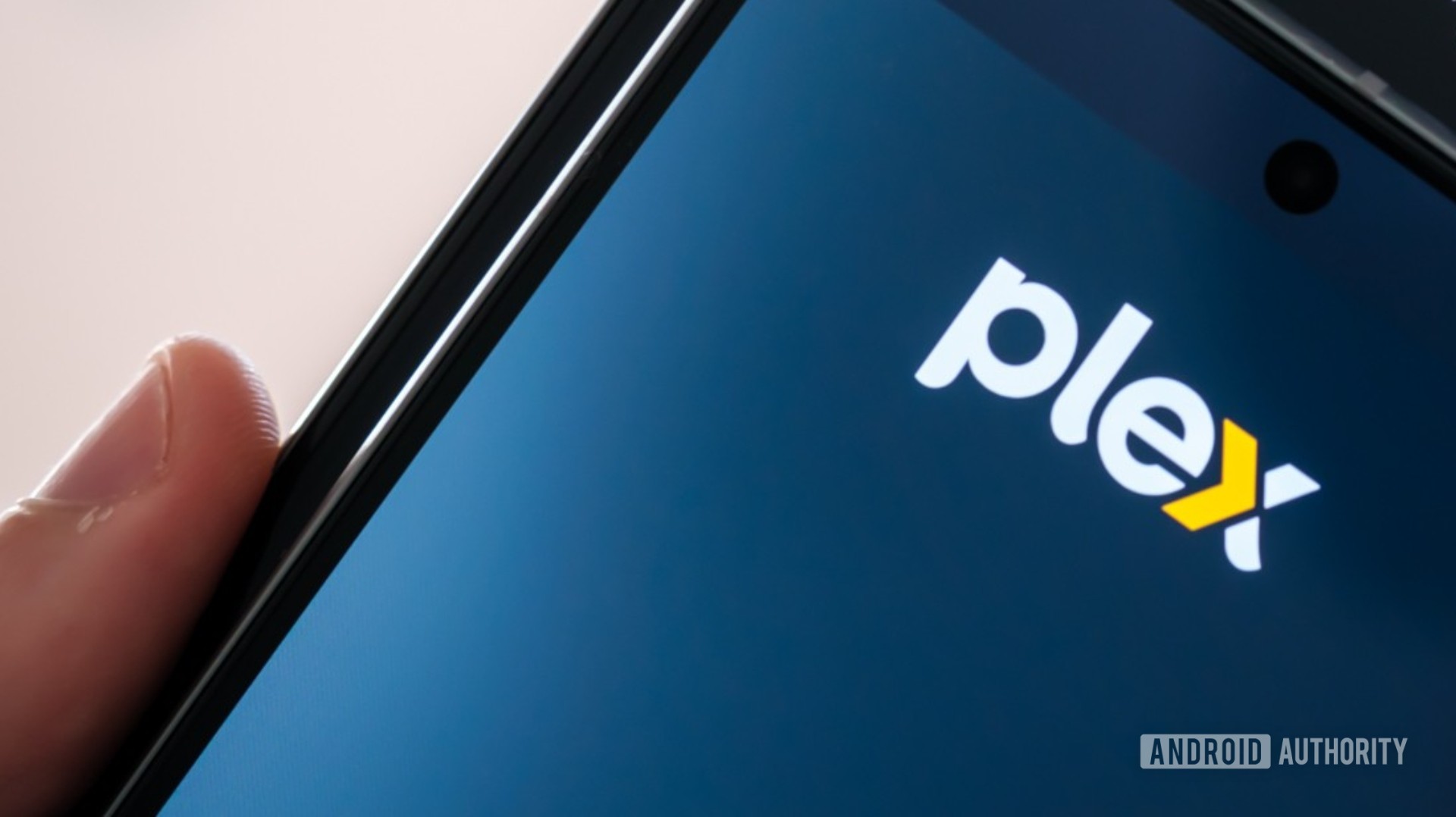
Because I am a Very Old Man™, I would like to talk a little bit about Google Play Music. I absolutely loved Google Play Music. In fact, if it were still around, it would probably be on this list. I loved having all my music in the cloud at 320Kbps quality, streamable for free from anywhere. I loved how I could granularly control things like artwork, track names, and playlists to suit my exact preferences. But then, as with so many Google services, it shipped off to the Google Graveyard with no adequate replacement (YouTube Music is still no proper replacement, sorry, Google).
While this was very sad, the death of Google Play Music had a silver lining for me: It forced me to adopt Plex. Now, not only has Plex become even better than Google Play Music had ever been, but it’s also done for movies, TV shows, and audiobooks what it did for me with music. There has rarely been a day in the past ten years that I haven’t streamed something from my Plex server.
My Plex server gives me access to all my music, movies, and shows from wherever I might be. But it also allows me to share that all with my family and friends.
Even if that’s all Plex did, it would be on this list. But Plex has become so much more than my personal media streaming service because I share it with my family and friends. It’s become almost a cliche now that whenever my users and I are together, we inevitably end up talking about what we all recently watched on my Plex build. It’s become a way for me to interact with the people I love indirectly, and who doesn’t want more of that in their lives?
While I know there are people out there who love Jellyfin over Plex or will push me to jump ship to Emby or Kodi instead; I’ll never leave. Unless Plex drastically changes what it is and how it functions, I’m a Plexer for life, now.
Garmin inReach Mini 2
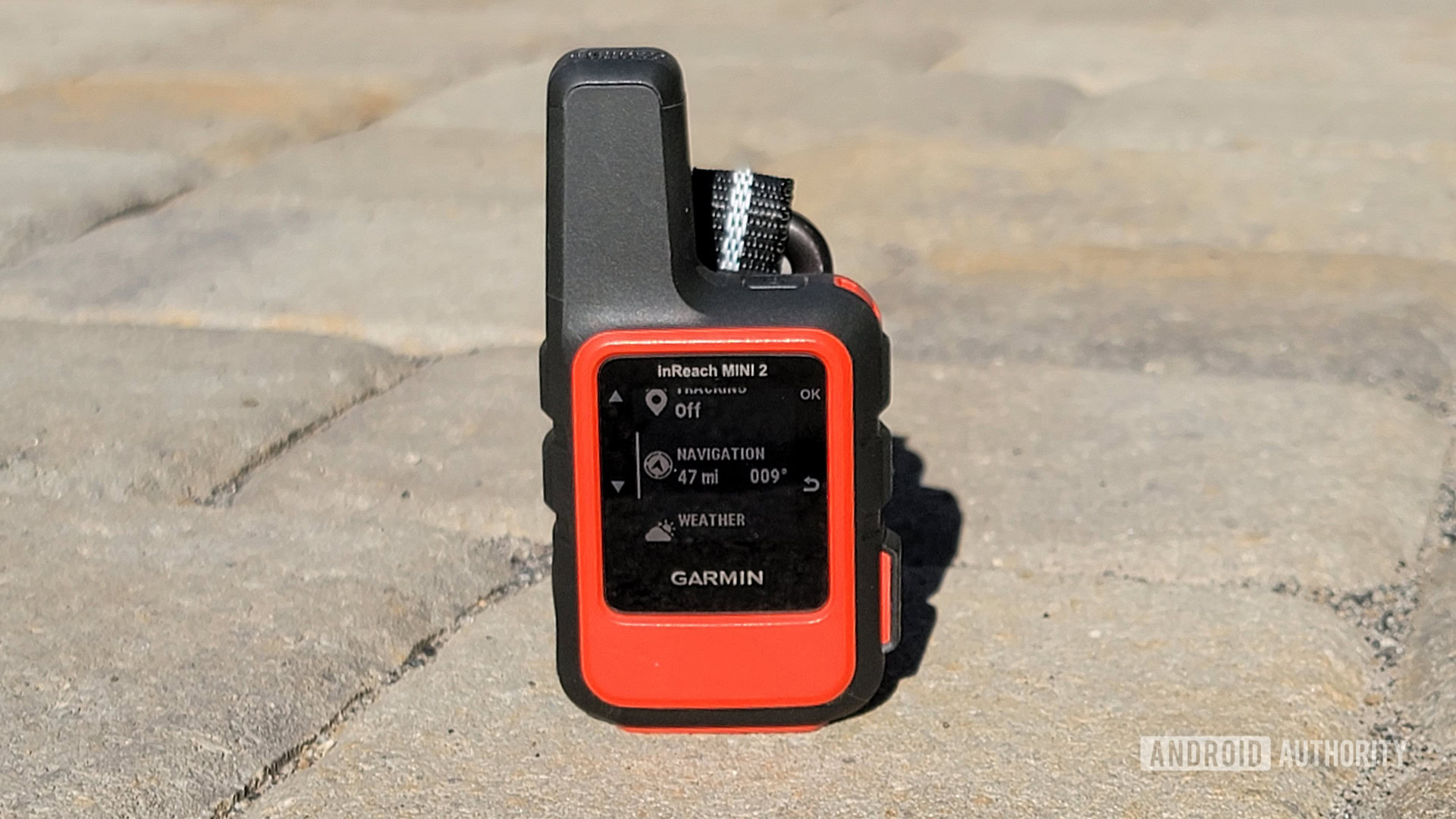
C. Scott Brown / Android Authority
My partner and I love to camp and go on hikes. Since we moved to northern California in 2022, we have done this more than ever, considering the surrounding area includes some of the most beautiful places in the United States — or the world, even. While outdoor activities are fun, they are dangerous, too. All it takes is one tumble, and you could be in big trouble.
The Garmin inReach Mini 2 ($388 at Amazon) won’t prevent either of us from falling and hurting ourselves, but it does give us both the peace of mind to know that, if something like that did happen, we would likely be OK. The SOS button on the inReach Mini 2 uses satellite connectivity to issue a call for help from anywhere with a clear view of the sky — no cell tower needed. This, in itself, is enough of a reason to take an inReach Mini 2 with you whenever you’re on an outdoor adventure.
When leaving for a trip outdoors, there are three things I always have: water, a first aid kit, and the Garmin inReach Mini 2.
However, Garmin crammed even more features into the device. You can plan out your route ahead of time and then use it as a navigator. You can message anyone from anywhere through a text message, track your steps so you can easily navigate your way out if necessary, and even get weather reports, all the while being completely off the grid. In my opinion, it is as essential an item for the modern outdoorsman as a first aid kit.
At this point, the inReach Mini 2 is permanently attached to my hiking gear. Even if it’s not powered on because we’re just going for a quick walk in the woods, I feel so much better knowing it’s there, and that makes being in the great outdoors even more fun than it is already.
Granted, the days of the inReach Mini 2 might be numbered now that iPhones and some Android phones are able to use satellite connectivity for emergency communication. For now, though, the inReach can still do more than any smartphone, so it will stay in my backpack.
Amazon Kindle
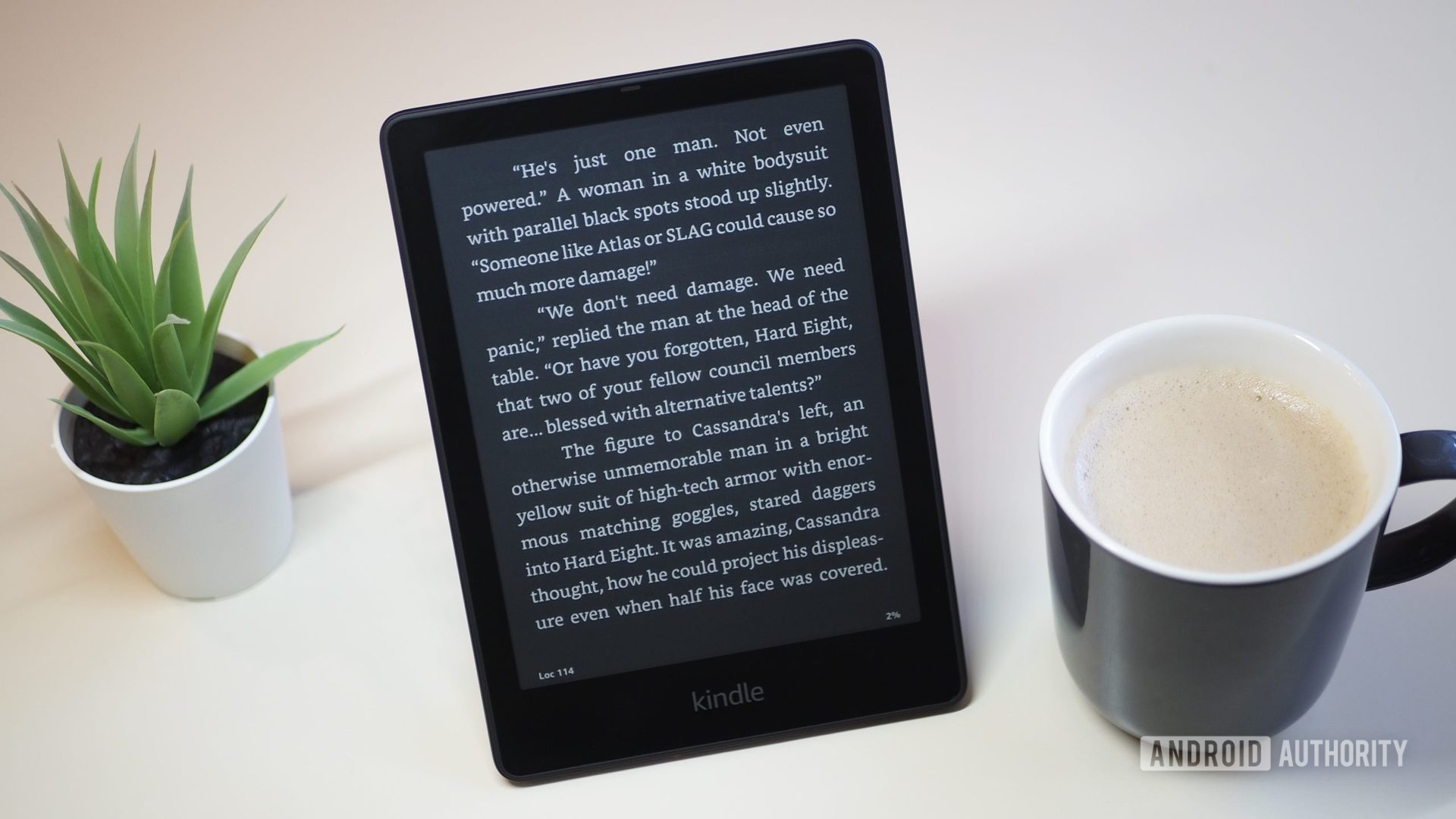
Rita El Khoury / Android Authority
Pretty much everyone wishes they read more. Reading is relaxing, fun, and good for the brain. Depending on what you’re reading, you can learn a lot, too. However, in my life, I’ve found carving out time for reading has been difficult. That’s why the Amazon Kindle Paperwhite ($139 at Amazon) has been a significant boon in my life: it’s made reading easier, causing me to do it more often.
The Kindle is a great product, but its true value is helping me to read more often than I would without it.
The Kindle solves so many problems for casual readers. You don’t need to carry one thick, heavy book with you at a time. Instead, you can carry thousands, all in one light and easy-to-use device. You can resize the text to accommodate your vision, highlight passages, and even buy new books instantly from wherever you are.
Obviously, you still need to have the desire to read, which a lot of people struggle with due to smartphones, TV shows, video games, and other distractions. But I’ve found that owning a Kindle has given me no excuses about reading when I do want to. It’s right there on my nightstand with a battery that seems to never die, a whole library’s worth of books, and a size and weight that makes it easy to hold for hours on end. In other words, its convenience has made me a person who reads more often, which not only helps me relax more but makes me a better writer. It’s just like Stephen King once said: “If you don’t have time to read, you don’t have the time (or the tools) to write.”
The Tea Maker from Breville
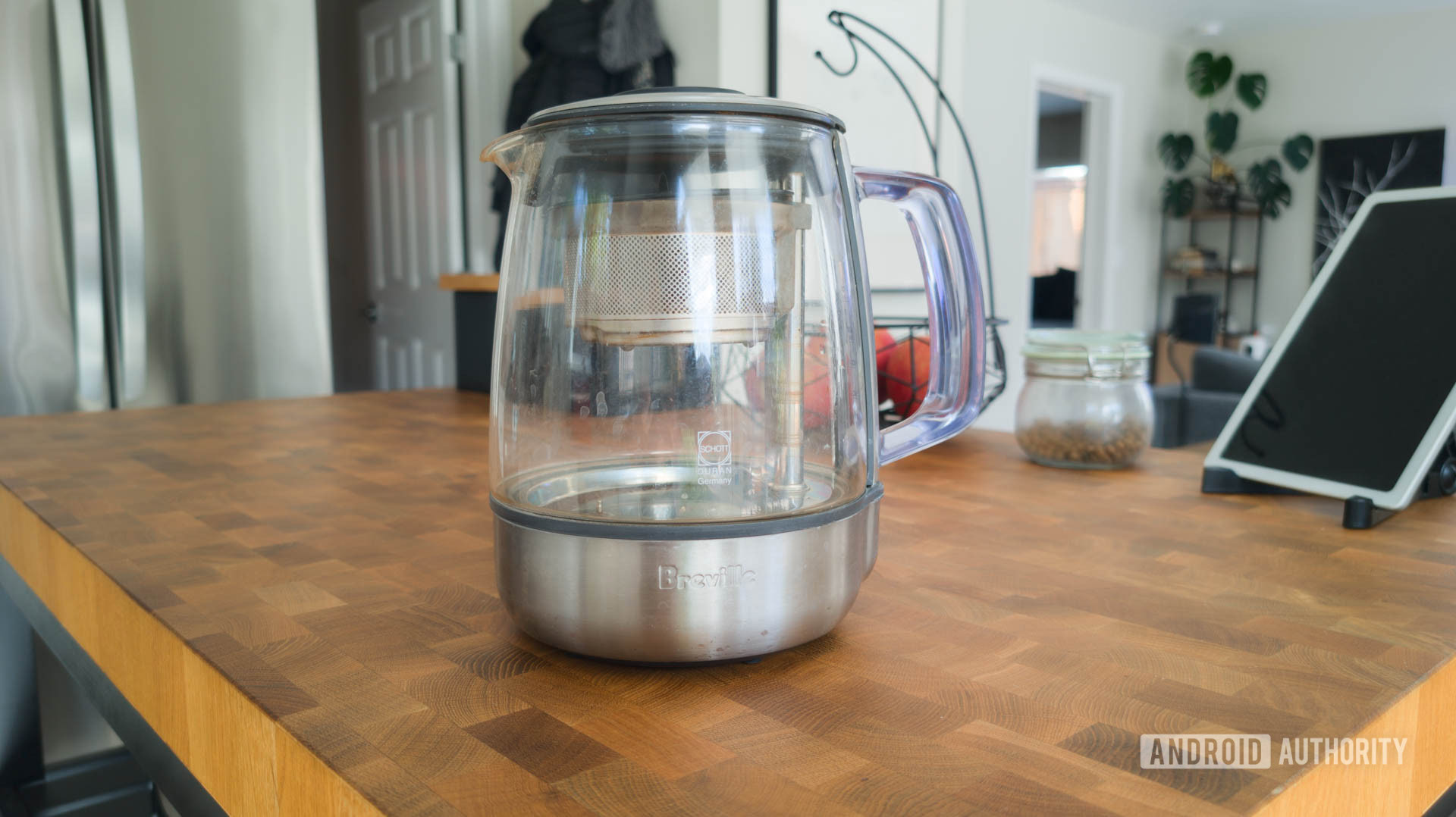
C. Scott Brown / Android Authority
I drink a lot of tea. On any given day, I’ll have at least three or four cups. Many people wish they drank more tea, considering its purported health benefits and lower caffeine content compared to coffee. Ah, but making tea one cup at a time is so inefficient. If only there were a way to make a lot of tea all at once!
Enter The Tea Maker from Breville ($289.95 at Amazon). It boils water in a glass carafe and then, using a magnetic lift system, drops a metal basket filled with tea into the water. It steeps the tea for a set amount of time, lifts the basket out, and then keeps the brewed tea warm for an hour. This gives you at least three cups of tea (four if you use small mugs), taking nearly all the work out of making tea.
The simple joy of having a fresh pot of delicious tea waiting for me in the morning is well worth the sky-high price of The Tea Maker.
To make things even better, you can set a timer for a brew, allowing you to set up The Tea Maker at night and then wake up to a fresh pot in the morning. You can also modify brew times to finely tune your perfect steeping method for the different black, green, or herbal teas you’re currently drinking.
I use The Tea Maker every day and cannot imagine my life without it. In fact, I am now on my second Tea Maker: when the first one I had broke after six years straight of daily use, I didn’t even think twice before buying a new one. It’s expensive, yes, but I would have happily spent twice as much on it.
ANC headphones
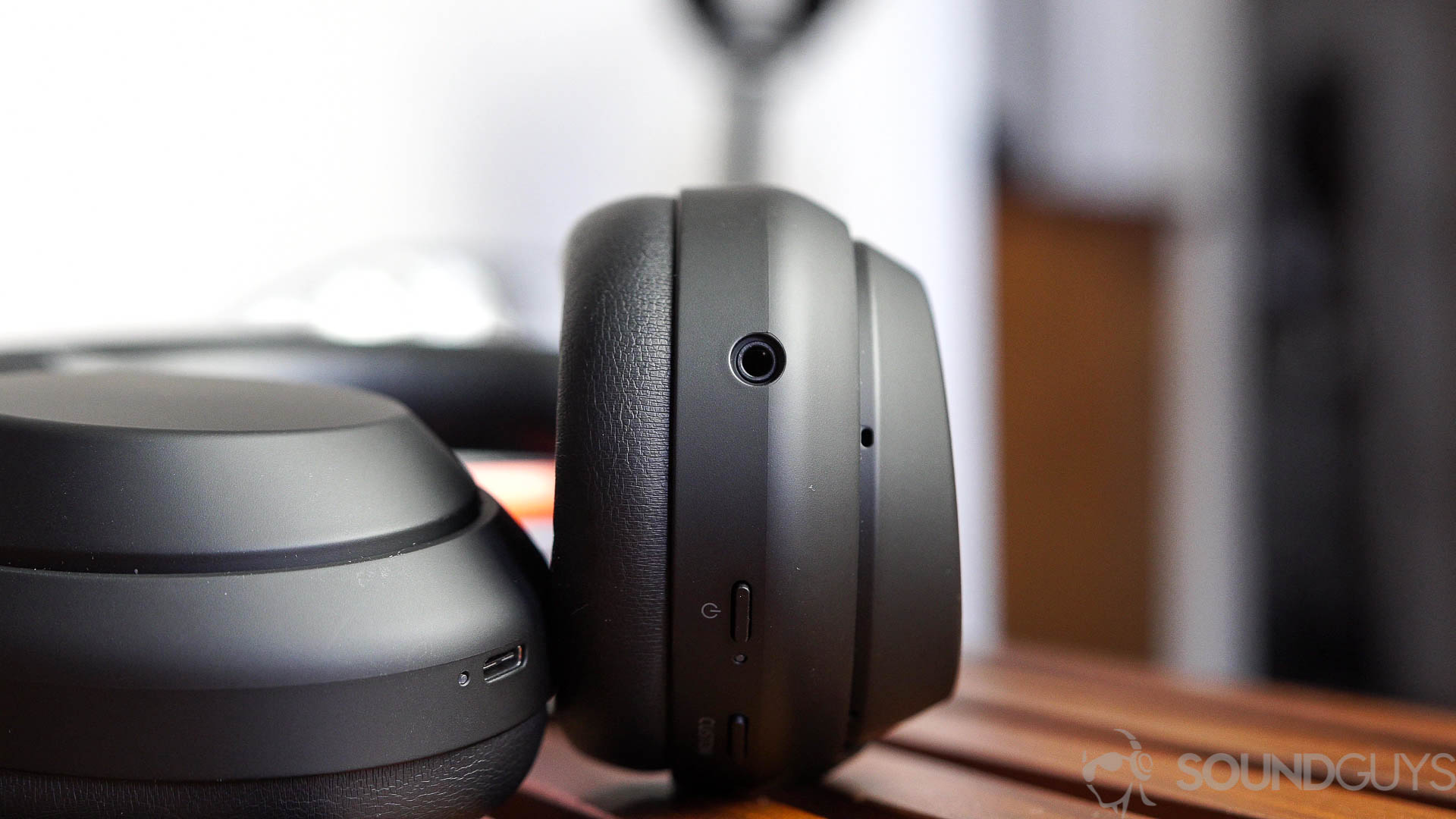
Zak Khan / Android Authority
My job requires a lot of travel. Each month, I spend many hours on a plane. Before active noise canceling (ANC) headphones, those hours were uncomfortable. Now, though, air travel is a breeze.
The specific headphones I use are the Sony WH-1000XM4 ($278 at Amazon), but there are plenty of great models out there, including the newer, differently-shaped Sony WH-1000XM5 ($387 at Amazon). Honestly, though, any of the best ANC headphones, as picked by the team of experts at our sister site SoundGuys, will give you an incredible experience.
The copious amount of air travel I do is only tolerable because of high-quality ANC headphones.
For me, it’s not just shutting out the ambient plane noise that makes ANC headphones so essential. The air pocket the headphones create around my ears also helps with take-offs and descents, preventing my ear canals from swelling up due to the changes in pressure. Now, I only get off the plane with stopped-up ears when I’m sick (and wearing a mask because of it!).
Since a good pair of ANC headphones (or earbuds) are so expensive, a lot of people think they aren’t worth the money. Honestly, I used to think that way. If, like past-me, you’re scoffing at spending over $200 on a good pair of headphones, hear me, please: once you fly with a set of these on your head, you will never fly without them again.
White noise machine
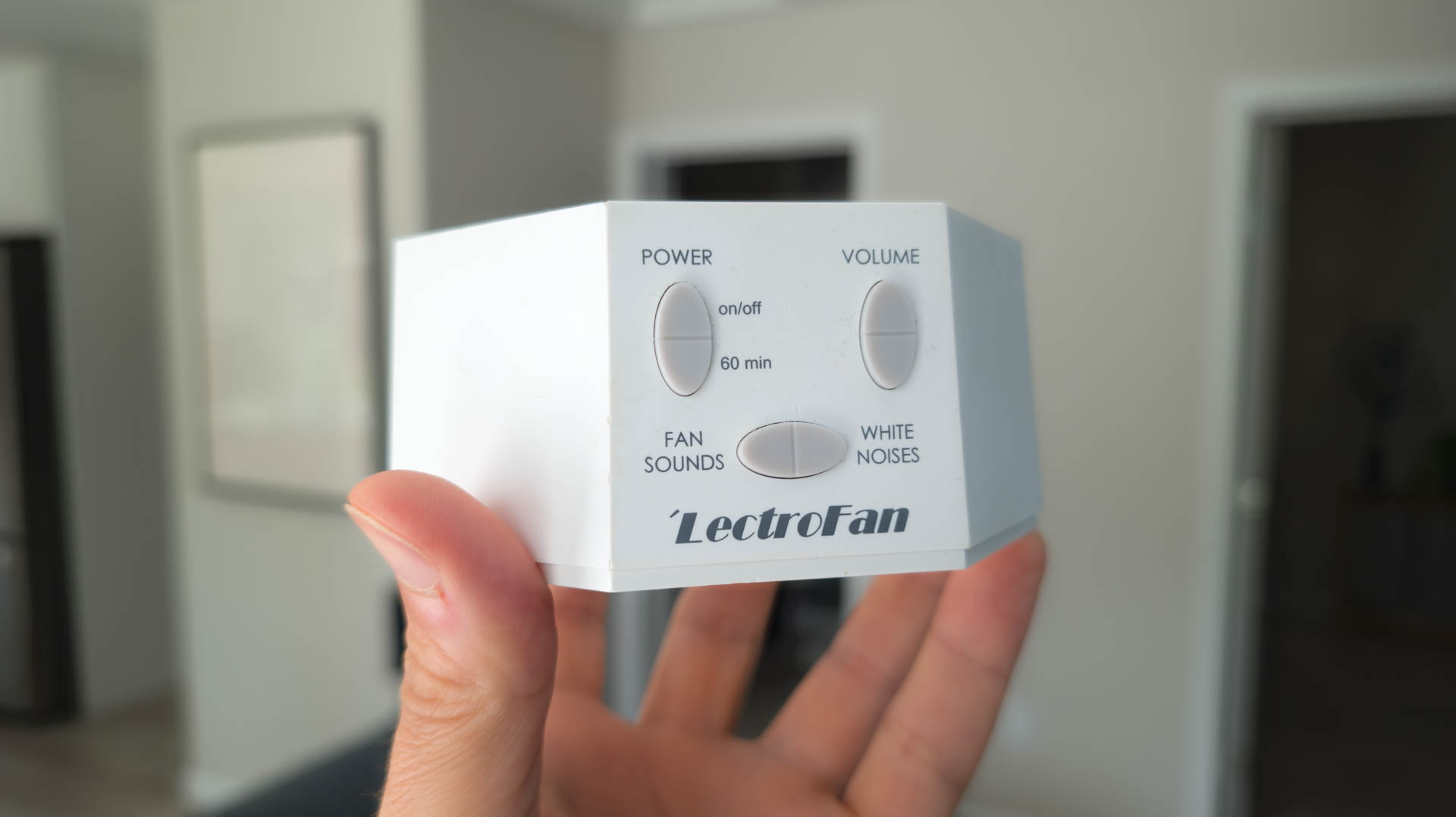
C. Scott Brown / Android Authority
ANC headphones help me get through plane rides, but traveling also usually means sleeping in an unfamiliar place. This can make sleep difficult, and trust me, when you’re at a big tech launch event, you need all the sleep you can get. For this, a white noise machine greatly helps with not only falling asleep but staying asleep.
A dedicated white noise machine gives me the gift that keeps on giving: a great night's sleep, every time.
You might think you don’t need a standalone machine for this. A white noise YouTube video playing loudly on your smartphone can come through in a pinch, that is true. However, the white noise machine I use — the LectroFan Classic ($49.95 at Amazon) — creates analog noise that is highly tunable and non-repeating. This means you don’t get the tinny shrill of smartphone speakers and don’t need to worry about the seemingly random noises starting to repeat themselves. It’s just pure, analog white noise.
At $50, this might seem like an indulgence rather than a necessity. However, don’t ever underestimate the power of a good night’s sleep. Since owning this particular device, I’ve slept mostly soundly for years and usually feel great when I wake up each day. If that’s not worth $50, I don’t know what is.
What about you? What tech has changed your life for the better? Let me know in the comments!

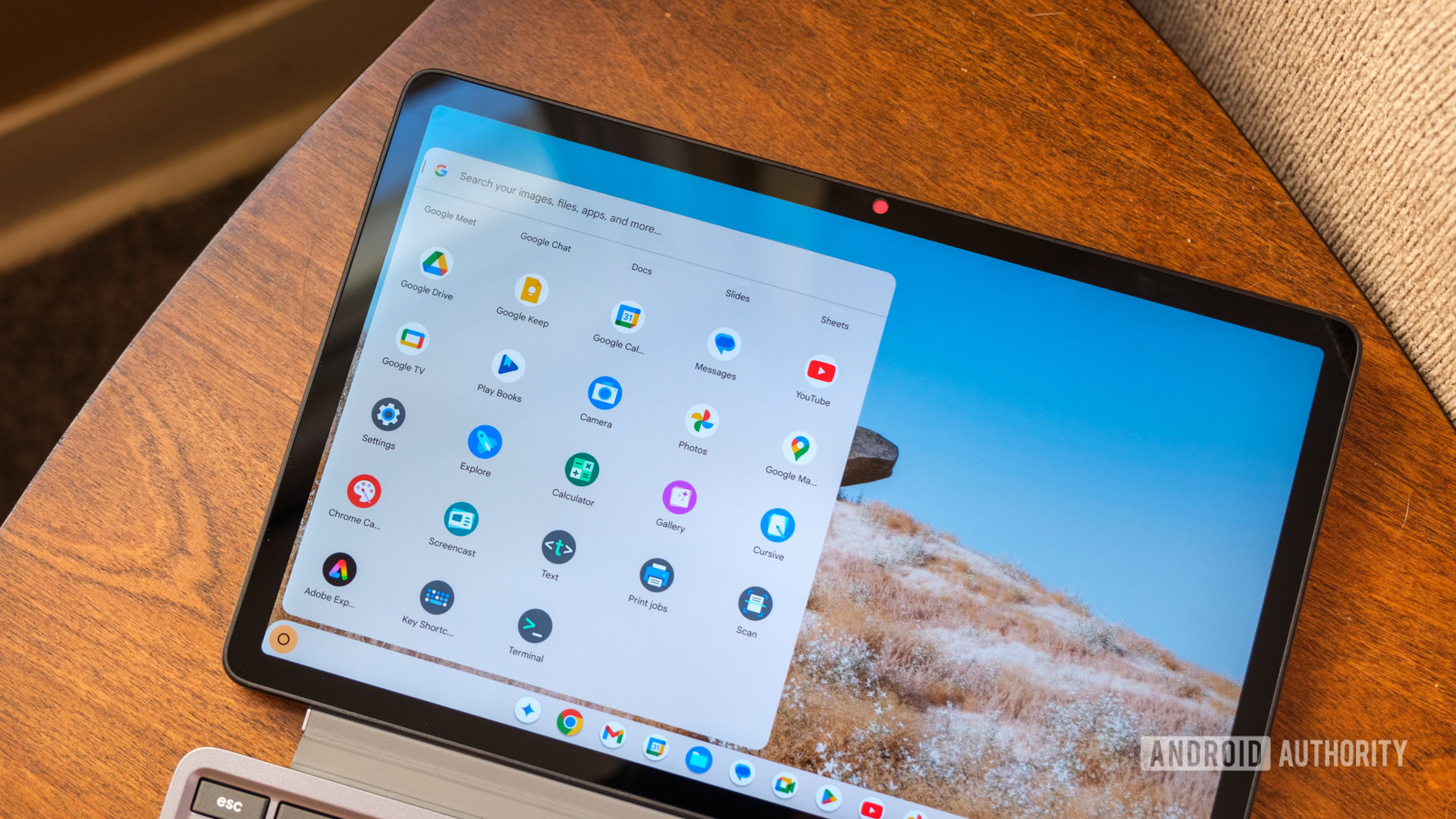
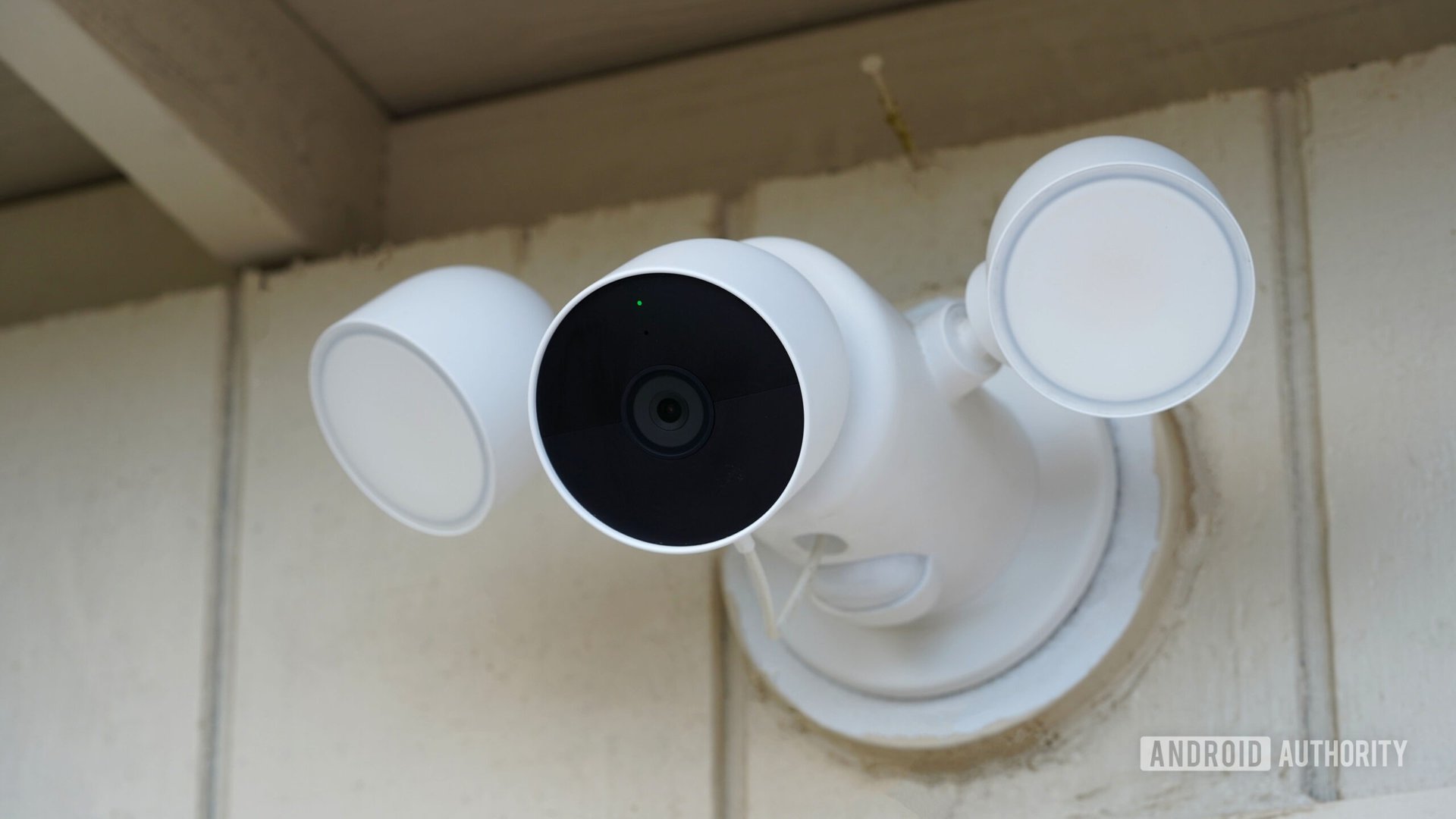
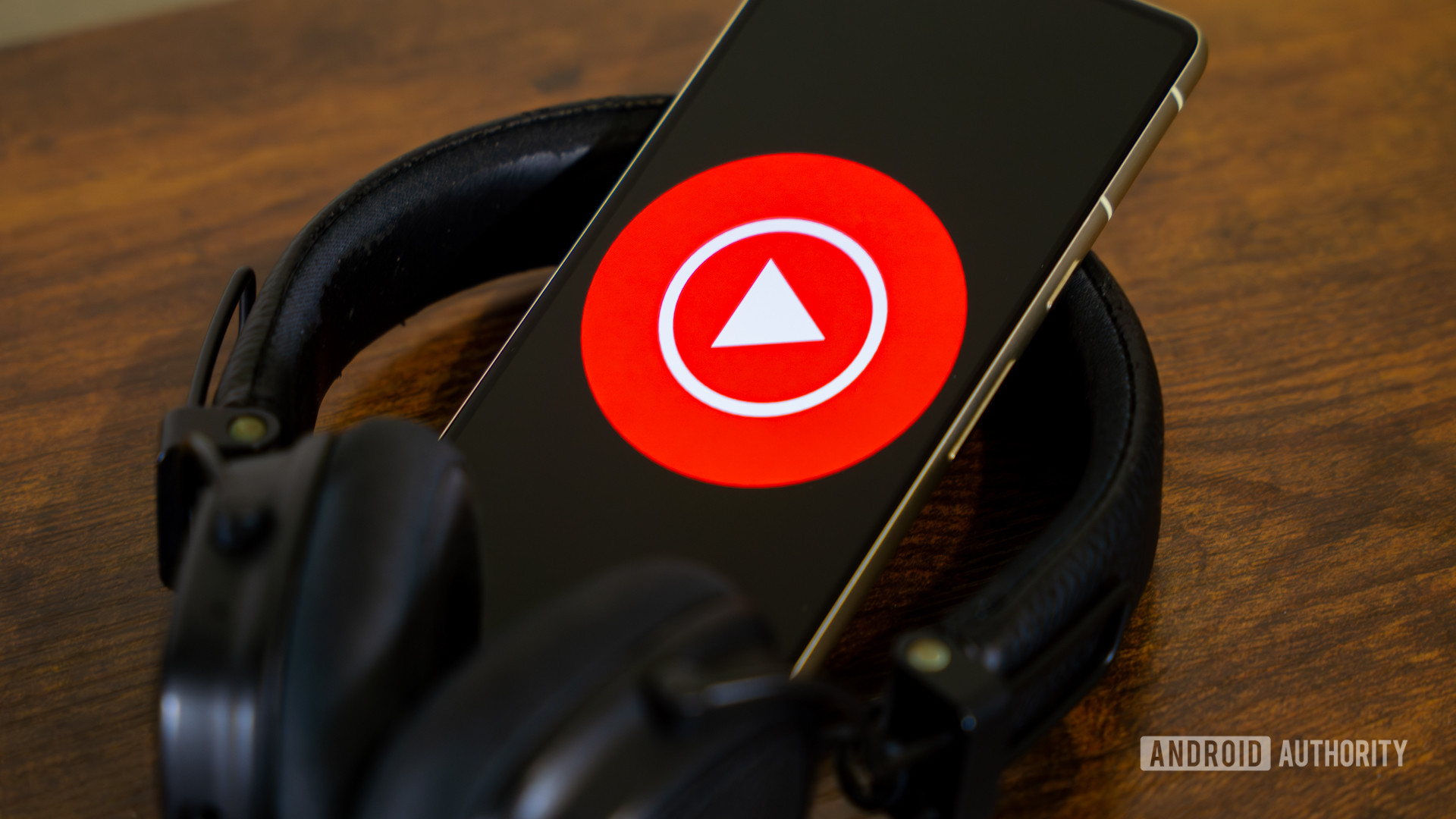




 English (US) ·
English (US) ·